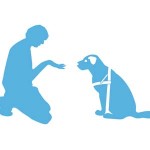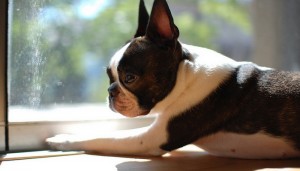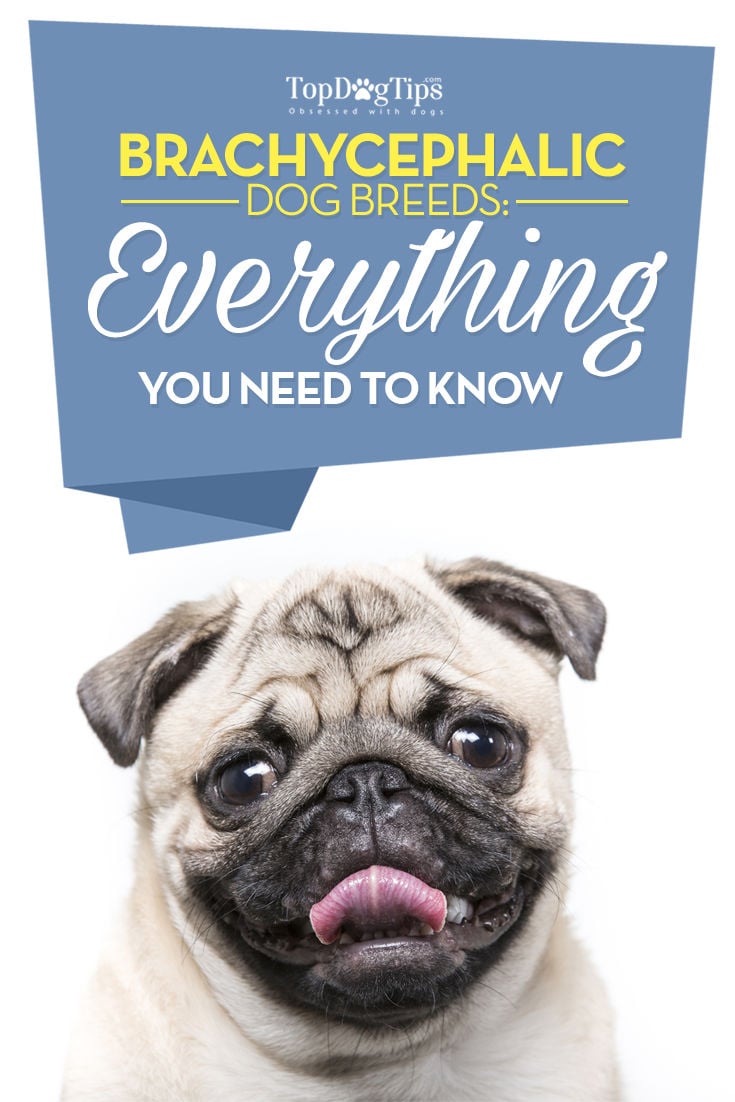 Brachycephalic breeds are dogs with pushed in noses. Many people think the trait makes them look adorable, but it can also cause some unique health issues. Some of the most common brachycephalic breeds are Boston terriers, English bulldogs, French bulldogs, pugs and boxers. These breeds have a unique head, muzzle and throat shape that is different from other canines, which can cause breathing issues and trouble with the brain, eyes and ears.
Brachycephalic breeds are dogs with pushed in noses. Many people think the trait makes them look adorable, but it can also cause some unique health issues. Some of the most common brachycephalic breeds are Boston terriers, English bulldogs, French bulldogs, pugs and boxers. These breeds have a unique head, muzzle and throat shape that is different from other canines, which can cause breathing issues and trouble with the brain, eyes and ears.
Brachycephaly can be translated to mean short head. The Greek word ‘brachy' means short, and ‘cephalic' means head. This condition is actually due to selective breeding, or the practice of breeding dogs to enhance specific traits. Breeders of brachycephalic breeds are focused on the goal of producing offspring with very short skulls, specifically in terms of the lower jaw region and nose. This will ensure that the puppy does not grow out of the snub-nosed look as he becomes an adult.
Most brachycephalic breeds have a few subtle health conditions, but nothing that is life threatening. However, extreme brachycephaly is an inherited condition that was man-made through the process of exaggerated selective breeding. Extreme brachycephaly can lead to life-long health issues for the dog and may ultimately shorten his life span.
Brachycephalic Breeds – What's the Difference?

If you follow my columns, you know that we have a 5-year-old boxer. I've rescued boxers for many years, but before adopting my first boxer I had never owned a brachycephalic breed before. It didn't take long to realize that there are some noticeable differences.
RELATED: Op-Ed: Canine Genetics – How to Make a Dog
When I took my first rescue boxer to our veterinarian for a checkup, she spoke with me about brachycephalic breeds and the differences between them and dogs with a traditional head and muzzle shape. She told me that due to their altered facial construction, they all suffer from a condition known as Brachycephalic Respiratory Syndrome (BRS) to a varying degree.
To understand this condition, you first need to understand your pet's nose. If you own a snub-nosed dog, you’ll notice that his nostrils are smaller than those of a dog with a traditional snout. They are scrolled in very tightly, making the nostrils narrow. This will make it harder for your dog to move air in and out.
BRS is also characterized by an elongated soft palate. In layman’s terms, this means that he has a big flap of skin located near the back of his throat that causes a lot of the common characteristics of brachycephalic breeds including snorting.
If you have a brachycephalic breed, make sure that your veterinarian checks that his respiration is sufficient before he undergoes any type of surgery.
Pets with BRS also tend to have a windpipe that is much narrow in some places than others. This is called tracheal stenosis, or a narrowing of the trachea. Not all brachycephalic breeds have this condition, but if your dog does, it can cause many issues like problems with anesthesia. In severe cases it can also lead to tracheal collapse.
Dangers of heat for brachycephalic breeds
As you know, dogs cannot sweat to cool down like we can. They pant, which works with the same principle. For us, the sweat evaporates off of our skin, which in turn helps to cool us down. Dogs with a traditional muzzle have a larger surface area inside their nose that is covered with many turbinates.

RELATED: 9 Wolf-Like Dog Breeds: Know the Difference and Choose Wisely
The turbinates are kept moist by glandular secretions. When air is inhaled, it travels over these small structures and cooling takes place in the exact same way as sweat evaporating from our skin. Unfortunately, in brachycephalic breeds the nasal passages are smaller and it is harder for them to pull in enough air to allow for normal thermoregulation.
In other words, brachycephalic breeds have a harder time controlling their body temperature, so they are much more susceptible to heat related illnesses. It's important for every dog owner to be aware of the dangers of heat stroke, but owners of snub-nosed dogs need to take special precaution to keep their pooches cool in hot weather.
Other health problems
Eye problems are also a concern for brachycephalic breeds. Because of their head shape, the eyes do not fit correctly in the head. The eye sockets are more shallow, which makes the eyes appear bulgy. This makes it more likely for them to have an eye popped out of socket.
Sometimes brachycephalic breeds have eyelid issues too. Since their eyes tend to bulge out more, sometimes the eyelids do not close completely. This leaves a lot of opportunity for eye damage and corneal irritation. It will also lead to chronic dry eye issues.

Your vet may be able to perform surgery to fix your dog's eyelids if this is the case. Be sure to check with them if you suspect there is an issue.
Brachycephalic breeds also have shorter jaw lines than most dogs. This can lead to teeth crowding, which can cause dental and gum problems. For this reason, it is vital to perform dental care at home for these dogs.
When is BRS a problem?
As I mentioned, all brachycephalic breeds suffer from some degree of BRS. In most, it is never an issue. BRS can get progressively worse over time, but unless it becomes a severe issue, there is no necessary treatment. Brachycephalic breeds make different noises (snorts, grunts and snores) than other dogs, so you’ll need to pay attention to the noises that your pet makes.
RELATED: Eye Infections in Dogs: Diagnosing and Treating Dog Eye Problems
If the noises change over time, you’ll want to schedule an appointment with your vet to be on the safe side. An increase in the number of different noises your dog makes, the loudness of the noises or any other significant change should be noted. If his BRS begins to cause serious issues, surgery may need to be performed.
Now it’s your turn!
Do you have a brachycephalic breed? What differences have you noticed? Do you have any tips or tricks to share about caring for a snub-nosed dog? We'd love to hear your personal experience with these types of dogs, so feel free to leave us a comment below or post a picture of your brachycephalic breed on our Facebook page. Let's talk!













